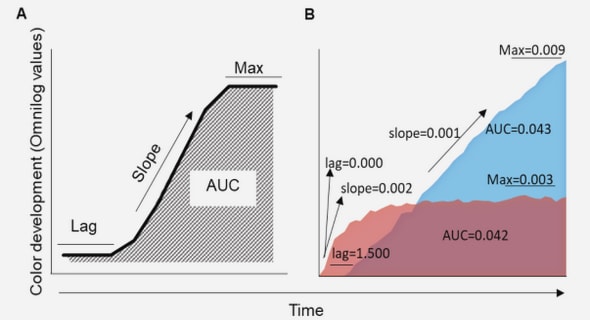Get Complete Project Material File(s) Now! »
Introduction
The Human Immuno-deficiency Virus (HIV) and Acquired Immune Deficiency Syndrome (AIDS) have emerged as the most challenging health matters in modern times. The pandemic has created not only medical, but also ethical, legal, social, and political issues, together with economic and human rights implications. Although HIV/AIDS is incurable at present, with the introduction of antiretroviral therapy (ART), it is now considered a manageable life-threatening disease.
Epidemics are not new in the history of humankind, nor are the reactions such as fear, ignorance, panic and isolation that often accompany such diseases. History has not forgotten the devastation caused by epidemics such as the bubonic plague (Black Death) during the fourteenth century in Europe. For modern people, however, epidemics have lost their sting. Van Dyk (1993:10) alleged that our present generation believed that the time of devastating epidemics is long past. The last major epidemic to plague the world was polio during the 1930s and 1940s, which was soon conquered by medical science.
HIV/AIDS, however, has shattered this false sense of security. The Joint United Nations Programme Report on the HIV/AIDS Epidemic for 2006 (UNAIDS, 2006) found that the number of people living with HIV/AIDS worldwide was estimated to be about 39.5 million during 2006 of which 37.2 million are adults, 17.7 million women, and 2.3 million children. The above estimates the AIDS deaths in 2006 to be a total of 2.9 million. An estimated 24.7 million people in Sub-Saharan Africa live with HIV. Since the discovery of AIDS during 1981, more than 60 million people worldwide have been infected with HIV and it is estimated that about 21.8 million people have died of the disease.
According to the Department of Health’s National HIV and Syphilis Antenatal Sero- Prevalence survey in the Republic of South Africa (South Africa, 2005) South Africa has recorded one of the highest HIV prevalence rates in the world. This country, with a population of 47 million, contains an estimated 5.54 million South Africans who are HIV-positive. The findings of above survey estimated prevalence rate of 27.9% amongst South Africans.
Of these 5.54 million HIV-positive people, 500 000 are estimated to suffer from Acquired Immunodeficiency Syndrome (AIDS) and are thus in need of ART‟s. The researcher is of the opinion that these statistics are an indication that everything possible should be done to treat as many people as possible and promote adherence to ART.
CHAPTER 1: GENERAL INTRODUCTION TO RESEARCH
1.1 Introduction
1.2 Problem Formulation.
1.3 Purpose, Goal, and Objectives .
1.4 Research Questions and hypothesis.
1.5 Research Approach (Qualitative and Quantitative)
1.6 Type of Research.
1.7 Research Design and Methodology.
1.8 Pilot Study.
1.9 Research Populations, Sample and Sampling Methods.
1.10 Ethical Aspects.
1.11 Limitations of the Study
1.12 Definition of Key Concepts .
1.13. Contents of the Research Report following this Chapter
CHAPTER 2: CLINICAL ASPECTS OF HIV/AIDS .
2.1 Introduction
2.2 The Human Immunodeficiency Virus.
2.3 Modes of Transmission.
2.4 Preventing the Spread of HIV
2.5 Immune System.
2.6 Summary.
CHAPTER 3: ANTIRETROVIRAL THERAPY (ART)
3.1 Introduction.
3.2 Goals of antiretroviral therapy .
3.3 Initiating Antiretroviral Therapy
3.4. Antiretroviral drugs (ART).
3.4.1 Nucleoside Reverse Transcriptase Inhibitors. (NRTIs)
3.5 Response to antiretroviral treatment and Treatment failure
3.6 Strategies in Treatment Failure.
3.7 Side Effects and Drug Interactions of Art
3.8 Other Uses of Antiretroviral Therapy
3.9 Summary.
CHAPTER 4: RESISTANCE AND THE ROLE OF ADHERENCE IN ANTIRETROVIRAL THERAPY (ART)
4.1 Introduction
4.3 Resistance.
4.4 Predicting Adherence.
4.5 Strategies for Measuring Adherence.
4.6 Medication Alert Strategies to Enhance Adherence
4.7 Adherence Support during the Different Phases
4.8 Special groups with regards to adherence.
4.9 Factors Influencing Adherence to Art .
4.10 SummarY
CHAPTER 5: THE SOCIAL WORKERS ROLE IN ASSISSING THE HIV/AIDS PATIENT FOR ANTIRETROVIRAL THERAPY UTILISING THE BIOPSYCHOSOCIAL MODEL
5.1 Introduction
5.2 The Social Work Profession
5.3 The Roles and Skills of the Social Worker in ARV Matters
5.4 Assessing the HIV/Aids Patient for Adherence to ART – Utilizing the Biopsychosocial Model
5.5 Summary
CHAPTER 6: EMPIRICAL FINDINGS FROM THE QUANTITATIVE AND QUALITATIVE PHASES OF THE STUDY: THE BIOPSYCHOSOCIAL FACTORS INFLUENCING HIV/AIDS PATIENT ADHERENCE TO ANTIRETROVIRAL THERAPY (ART): A SOCIAL WORK STUDY .
CHAPTER 7: SUMMARY, CONCLUSIONS AND RECOMMENDATIONS .
REFERENCES
APPENDIXES

